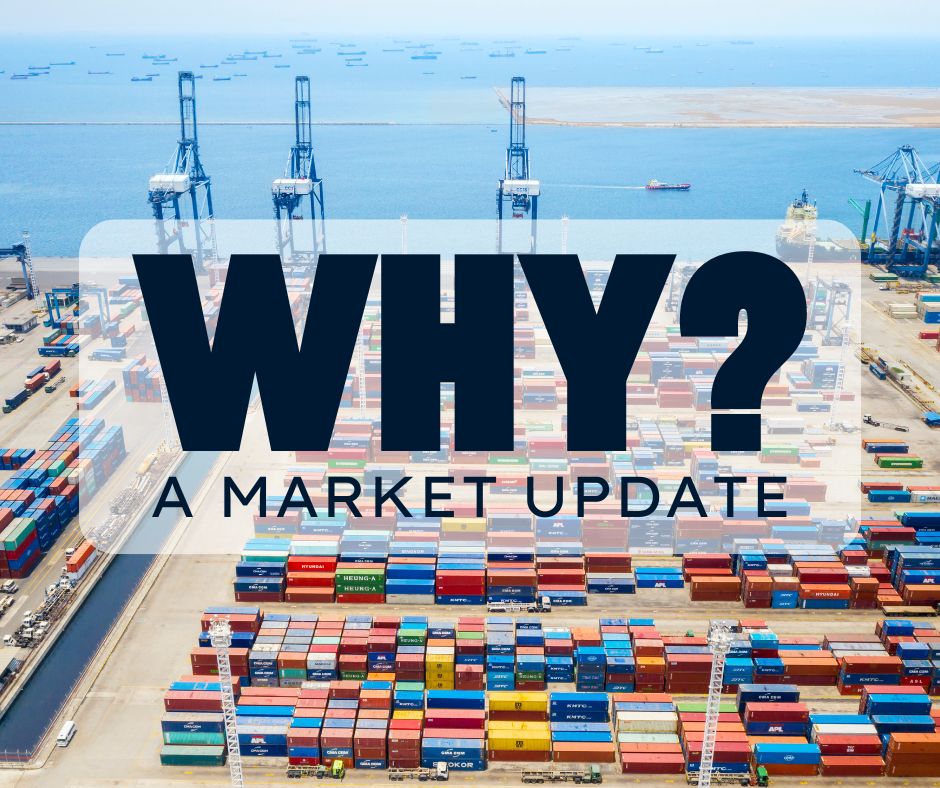
OCEAN RATES ARE INCREASING AGAIN
WHY?
Early summer is normally smooth sailing in the freight forwarding world so recent unanticipated rate hikes have both importers and exporters asking “why?”
While there is no singular definitive explanation, here is an overview of some of the many factors currently influencing the continuing rise in market rates.
Imports from Asia are exceptionally strong early this year.
Asia imports to the USA increased almost 30% in the first quarter this year over the same period last year, according to PIERS. Projected June imports of 2.03 million TEUs would be 10.7% higher than a year ago. Importers are front loading inventory creating an early peak season and probably looking to get ahead of the possible US East Port labor strike.
Potential for Increased Tariffs.
Some importers might be moving up imports from China in anticipation of possible increased tariffs based on the election results later this year.
US East Coast port labor negotiations.
The contract is up at the end of September. The union is expecting big concessions from the port operators similar to what the US West Coast union got a few years ago. The positive news is there has not been a work stoppage on the East Coast since 1977. But the possibility is still there for a work stoppage, so some importers are already moving more of their supply chain through US West Coast ports adding to the already high volume and tight vessel space.
Large Importers are increasing inventory early to avoid costs later in the year.
Large BCO (Beneficial Cargo Owners – companies like Walmart, Home Depot, Dollar General) are increasing their weekly needs for containers from Asia to the USA. Steamship line contracts only allow for a certain number of guaranteed containers so when a large importer needs additional space, they move into the “Spot Market”. We have heard that BCO’s have pushed much of their production up and are buying up any available space at spot market rates over the past 1-2 months.
Possible Canadian railroad strike.
In May, rail workers from Canadian National (CN) and CPKC voted overwhelmingly to strike as soon as May 22. The Canadian government stepped in to slow the process, but there is still a good possibility of a strike so many importers are avoiding Vancouver, Prince Rupert, and Halifax – St. Johns ports. This is increasing volumes into US West Coast ports causing very tight space and increasing rates.
Canadian port foreman labor negotiations.
The port foremen maintain their own contact with port owners. That contract has expired, and the negotiations are not going well…possible strike. Dock workers are under a new contract, but they might walk out in support of their foremen.
Suez Canal diversions around the Cape of Good Hope Africa
Carriers are continuing to route vessels around Africa to Europe and US East Coast ports. The extra miles are absorbing more ships…estimates are 10 – 12% additional capacity. This is one factor favoring the increase in rates due to tight capacity from Asia.
Panama Canal restrictions due to low water levels.
Rainy season has returned but water levels are not back to normal. The canal authorities are slowly increasing the number of daily transits, so we hope to be back to regular transits soon. However, water levels could be a long-term problem with global warming and weather patterns changing.
Baltimore
The port of Baltimore is beginning to reopen, and we are seeing bookings build up for containers headed to the Baltimore and surrounding area. While Baltimore is not a big destination for containers set to be railed inland, the last few months of closure have added additional disruption for the East Coast ports in the USA and Canada. Congestion was felt in New York and Norfolk especially.
Our advice?
We recommend booking import ocean shipments in advance of three to four weeks if possible. We think it’s possible rates will stay elevated until September – October then gradually start lowering as we move into Q1 of 2025
As always, contact us with any questions!
